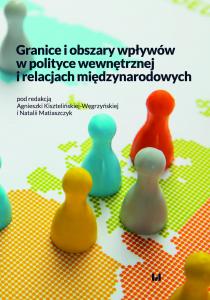Wpływ południowokoreańskiej sztuki filmowej na turystykę slumsową w Korei Południowej w XXI wieku
Abstract
Celem niniejszego artykułu jest analiza wpływu południowokoreańskiej sztuki filmowej na turystykę slumsową w Korei Południowej w XXI wieku. W badaniu przyjęto hipotezę, iż rosnąca popularność kultury koreańskiej przyczynia się do wzrostu zainteresowania biednymi dzielnicami, które nie figurują na mapie typowych atrakcji turystycznych tego państwa. Podstawą analizy są dwie południowokoreańskie produkcje, które w ostatnim czasie zyskały ogromną popularność na całym świecie („Squid Game”, „Parasite”) oraz publikacje naukowe dotyczące turystyki slumsowej. Co więcej, pod uwagę wzięte zostaną również recenzje produkcji, artykuły i wpisy internetowe oraz dane statystyczne. Przenalizowane zostaną również działania podejmowane przez koreański rząd na rzecz rozwoju turystyki. Artykuł odpowie na pytania badawcze: czy analizowane produkcje mają wpływ na wzrost zainteresowania turystyką slumsową w Korei Południowej, jakie skutki niesie ze sobą wzrost jej popularności oraz jakie stanowisko w tej sprawie zajmuje koreański rząd. Pierwsza część artykułu skupi się na wyjaśnieniu pojęcia turystyki slumsowej oraz przedstawienia analizowanych produkcji. W drugiej części przeprowadzona zostanie analiza różnych źródeł, której celem jest zbadanie wpływu południowokoreańskiej sztuki filmowej na zjawisko turystyki slumsowej. W ostatniej części artykułu przedstawione zostaną wnioski. The aim of this article is to analyze the impact of South Korean film art on slum tourism in South Korea in the 21st century. The study hypothesized that the growing popularity of Korean culture contributes to the increased interest in poor districts that do not appear on the map of typical tourist attractions of this country. The analysis is based on two South Korean productions that have recently gained immense popularity around the world ("Squid Game", "Parasite") and scientific publications on slum tourism. What's more, reviews of productions, articles and internet entries as well as statistical data will also be taken into account. Activities undertaken by the Korean government for the development of tourism will also be analysed. The article will answer the research questions: whether the analyzed productions have an impact on the increased interest in slum tourism in South Korea, what are the effects of its increased popularity and what is the position of the Korean government on this matter. The first part of the article will focus on explaining the concept of slum tourism and presenting the analyzed productions. In the second part, an analysis of various sources will be carried out, the aim of which is to examine the impact of South Korean film art on the phenomenon of slum tourism. Conclusions will be presented in the last part of the article.
Collections


